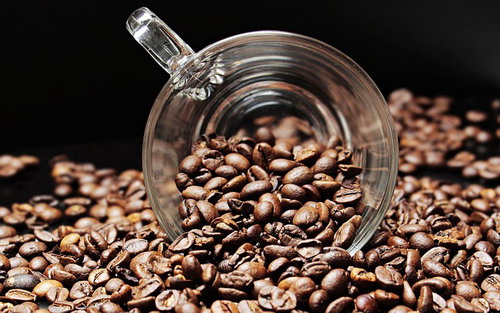Coffee Beans
Coffee is one of the most beloved beverages worldwide, enjoyed by millions of people every day. Its rich aroma and invigorating taste have made it a staple in various cultures and societies. However, not all coffee is created equal, and the type of coffee bean plays a crucial role in the flavor and quality of your cup. Understanding the different types of coffee beans can enhance your appreciation and enjoyment of this popular drink. This article delves into the four main types of coffee beans: Arabica, Robusta, Liberica, and Excelsa, exploring their unique characteristics, growing conditions, and flavor profiles.
Types of Coffee Beans
1. Arabica Beans
Arabica beans, scientifically known as Coffea arabica, are the most popular type of coffee bean, accounting for about 60-70% of global coffee production. They have a long history, believed to have originated in the highlands of Ethiopia. Today, they are predominantly grown in Latin America, particularly in countries like Brazil and Colombia.
Characteristics:
Arabica beans are renowned for their smooth, complex flavor, which often includes notes of sugar, fruit, and berries. They are less bitter than other types of beans, making them a favorite among coffee connoisseurs. The beans have a slightly elongated shape with a curved crease on one side. Arabica coffee is generally considered superior in quality, with a wide range of flavors that can be influenced by the growing region and processing methods.
The caffeine content in Arabica beans is lower compared to Robusta beans, typically ranging from 1.2% to 1.5%. This lower caffeine content contributes to their milder taste.
Growing Conditions:
Arabica beans thrive in high altitudes and cooler climates, typically between 600 and 2,000 meters above sea level. They require a specific range of temperatures, ideally between 15-24°C (59-75°F), and ample rainfall. These beans are more susceptible to pests and diseases, which makes their cultivation more challenging. The delicate growing conditions contribute to the beans’ higher cost compared to other types.
2. Robusta Beans
Robusta beans, known scientifically as Coffea canephora, are the second most common type of coffee bean, comprising about 30-40% of global coffee production. They are predominantly grown in Africa and Southeast Asia, with Vietnam being one of the largest producers.
Characteristics:
Robusta beans are known for their strong, bold flavor, which is often described as earthy, bitter, and grainy, with nutty overtones. The beans are rounder and smaller compared to Arabica beans, with a straight crease on one side. Robusta coffee has a thicker crema when brewed, making it a popular choice for espresso blends.
Robusta beans have a higher caffeine content, typically ranging from 2.2% to 2.7%. This higher caffeine level contributes to their more robust and bitter taste and provides a greater resistance to pests and diseases.
Growing Conditions:
Robusta beans are more adaptable to various climates and can be grown at lower altitudes, usually between sea level and 600 meters. They thrive in hotter climates, with temperatures ranging from 24-30°C (75-86°F). These beans are less demanding in terms of growing conditions, making them easier and cheaper to cultivate. Their hardiness and higher yield contribute to their lower price compared to Arabica beans.
3. Liberica Beans
Liberica beans, scientifically known as Coffea liberica, are less common and constitute a small percentage of global coffee production. They are primarily grown in West Africa and parts of Southeast Asia, such as the Philippines.
Characteristics:
Liberica beans are unique in both flavor and appearance. They have a distinct, irregular shape, often larger than Arabica and Robusta beans, with a characteristic hook at one end. The flavor profile of Liberica coffee is bold and smoky, with a woody and floral aroma. Some describe it as having a full-bodied, almost syrupy texture with hints of dark chocolate and spice.
The caffeine content in Liberica beans varies but is generally moderate, contributing to their complex flavor.
Growing Conditions:
Liberica beans thrive in hot, humid climates at lower altitudes. They are more tolerant of changes in climate and can be grown in areas where other coffee beans might struggle. However, their cultivation is less widespread due to their unique taste, which appeals to a niche market.
4. Excelsa Beans
Excelsa beans, recently reclassified as a variety of Liberica, are scientifically known as Coffea liberica var. dewevrei. They are primarily grown in Southeast Asia and make up a small fraction of global coffee production.
Characteristics:
Excelsa beans have a distinct flavor profile, characterized by a tart, fruity taste and a unique complexity that adds depth to coffee blends. They are often used to enhance the flavor of other beans, providing a balance of acidity and body. The beans are medium-sized with an almond-like shape.
The caffeine content in Excelsa beans is moderate, contributing to their balanced taste and complexity.
Growing Conditions:
Excelsa beans prefer similar growing conditions to Liberica, thriving in hot, humid climates at low altitudes. They are relatively hardy and can withstand varying climatic conditions, making them suitable for regions with inconsistent weather patterns.
Comparison of Coffee Beans
Flavor Profiles:
- Arabica: Sweet, fruity, and complex with notes of sugar, fruit, and berries.
- Robusta: Strong, bitter, and earthy with nutty overtones.
- Liberica: Bold, smoky, woody, and floral with a full-bodied texture.
- Excelsa: Tart, fruity, and complex, often used to add depth to blends.
Caffeine Content:
- Arabica: Lower caffeine content (1.2-1.5%).
- Robusta: Higher caffeine content (2.2-2.7%).
- Liberica: Moderate caffeine content.
- Excelsa: Moderate caffeine content.
Price and Availability:
- Arabica: Generally more expensive due to challenging growing conditions and higher demand.
- Robusta: Cheaper and more widely available, often used in instant coffee and espresso blends.
- Liberica: Less common and more expensive, catering to a niche market.
- Excelsa: Rare and used primarily in blends to enhance flavor complexity.
Selecting the Right Coffee Bean
Choosing the right coffee bean depends largely on your personal taste preferences. If you enjoy a smooth, mild coffee with fruity notes, Arabica beans are likely your best choice. For those who prefer a strong, bitter cup with a bold flavor, Robusta beans are ideal. If you’re looking for something unique with a smoky, floral taste, Liberica beans offer a distinct experience. Excelsa beans are perfect for adding complexity and depth to your coffee blends.
Brewing Methods:
Different types of coffee beans are suited to various brewing methods. Here are some recommendations:
- Arabica: Best for pour-over, drip coffee, and cold brew due to its delicate flavors.
- Robusta: Ideal for espresso and instant coffee, where its strong flavor and thick crema shine.
- Liberica: Suitable for French press and traditional brewing methods to appreciate its full-bodied, unique taste.
- Excelsa: Great for blending with other beans in any brewing method to add a complex, fruity dimension.
The type of coffee bean you choose significantly impacts your coffee’s flavor, aroma, and overall experience. Arabica, Robusta, Liberica, and Excelsa beans each offer unique characteristics that cater to different tastes and preferences. By understanding the distinct qualities of each bean type, you can make more informed choices and enhance your coffee-drinking experience. Whether you prefer the smooth sweetness of Arabica, the robust bitterness of Robusta, the bold smokiness of Liberica, or the complex tartness of Excelsa, there’s a coffee bean out there for everyone. So, explore, experiment, and find your perfect cup of coffee.








